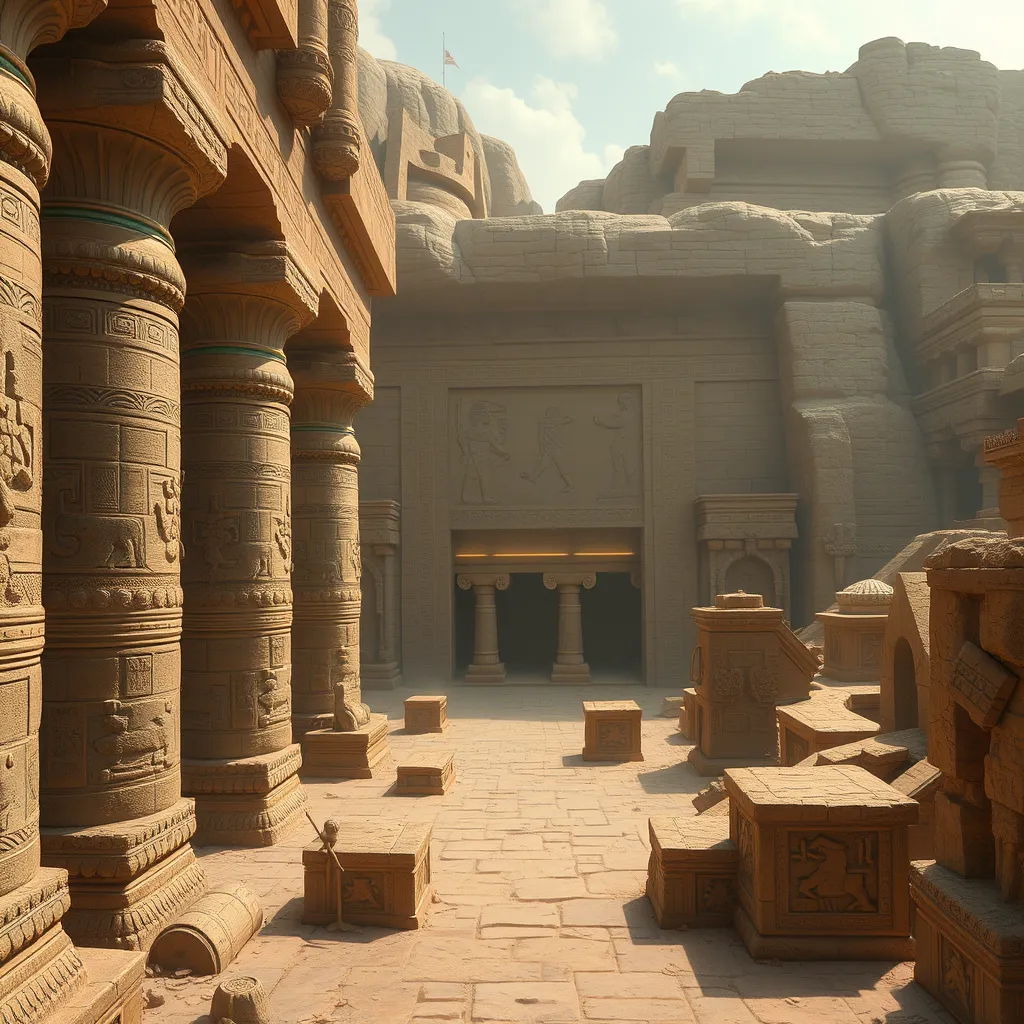The Duat: A Realm of Hidden Wonders
I. Introduction
The Duat, in ancient Egyptian mythology, is a complex and multifaceted realm that serves as the land of the dead. It embodies a significant aspect of the ancient Egyptians’ beliefs regarding the afterlife, transformation, and rebirth. The Duat is not merely a destination for the deceased; it is a transformative space where the soul undergoes trials and encounters divine beings. Understanding the Duat is essential for grasping the ancient Egyptians’ views on mortality and the journey beyond life.
II. Historical Context
A. Origins of the Duat in Ancient Egyptian Beliefs
The concept of the Duat can be traced back to the earliest stages of ancient Egyptian civilization, with its origins rooted in the belief systems surrounding death and the afterlife. Ancient Egyptians envisioned the afterlife as a continuation of life on earth, where one would face judgment and experience rebirth.
B. Evolution of the Duat’s Depiction in Texts and Artifacts Over Time
Over the millennia, the depiction of the Duat evolved. Early texts such as the Pyramid Texts and later the Coffin Texts provided insights into the nature of the Duat, detailing its geography, inhabitants, and the journey of the soul. Artifacts, including tomb paintings and funerary inscriptions, illustrate the various realms within the Duat and the significance of the deities that populate it.
III. Landscape of the Duat
A. Description of the Geography and Features of the Duat
The landscape of the Duat is rich and diverse, often described in terms of mystical features that reflect an otherworldly realm. Key geographical elements include:
- Rivers: The Duat is often depicted as having rivers filled with water and fire, symbolizing the duality of life and death.
- Mountains: These represent challenges and obstacles that souls must overcome.
- Fields: Known as the “Field of Reeds,” this area symbolizes paradise, where the souls of the righteous find peace and sustenance.
B. Symbolic Representations of Various Landscapes
The landscapes within the Duat are not merely physical but hold symbolic meanings that reflect the beliefs of the ancient Egyptians regarding the afterlife. For instance, the rivers often symbolize the transition between life and death, while the mountains represent the trials faced by souls on their journey.
IV. Deities and Guardians of the Duat
A. Key Deities Associated with the Duat
Several deities play crucial roles in the Duat, guiding the souls of the deceased and maintaining cosmic order. Some of the most significant include:
- Osiris: The god of the afterlife, resurrection, and regeneration, who presides over the judgment of souls.
- Anubis: The god of embalming and the protector of graves, who guides souls through the Duat.
- Ma’at: The goddess of truth and justice, who weighs the hearts of the deceased against the feather of truth in the afterlife.
B. Roles of These Deities in Guiding Souls and Maintaining Order
These deities serve vital functions in the Duat. Anubis, for example, ensures that souls are properly prepared for their journey, while Osiris offers hope of resurrection. Ma’at’s presence assures that the principles of truth and justice govern the afterlife, reflecting the ancient Egyptians’ values.
V. The Journey Through the Duat
A. The Process of the Soul’s Journey After Death
After death, the soul embarks on a perilous journey through the Duat, which is depicted as fraught with challenges and trials. This journey is marked by several key stages:
- Departure: The soul leaves the body, guided by Anubis.
- Judgment: The heart of the deceased is weighed against Ma’at’s feather.
- Transformation: Successful souls are transformed and granted eternal life in the Field of Reeds.
B. Trials and Tribulations Faced by the Deceased in the Duat
Throughout their journey, souls face various trials, including encounters with hostile entities, navigating treacherous landscapes, and answering riddles. These challenges are designed to test the soul’s worthiness and adherence to Ma’at.
VI. Mythological Significance and Stories
A. Key Myths Related to the Duat, Including the Osiris Myth
The Duat is central to several myths, with the story of Osiris being one of the most prominent. Osiris, after being murdered by his brother Set, descends into the Duat, where he is resurrected and becomes the ruler of the afterlife. This myth encapsulates themes of death, rebirth, and the eternal cycle of life.
B. Lessons and Moral Teachings Derived from These Stories
The stories associated with the Duat convey essential moral lessons, emphasizing the importance of living a life in accordance with Ma’at, the need for ethical behavior, and the promise of transformation and hope in the afterlife.
VII. The Duat in Art and Literature
A. Representation of the Duat in Ancient Egyptian Art and Hieroglyphs
The Duat has been vividly represented in ancient Egyptian art, particularly in tomb paintings and hieroglyphs. These artistic expressions often depict scenes of judgment, the landscapes of the Duat, and the deities that inhabit it, serving both as a guide and a comfort for the deceased in their journey.
B. Influence of the Duat on Later Literature and Cultural Interpretations
The concept of the Duat has influenced various forms of literature and cultural interpretations throughout history. Its themes of death, the afterlife, and moral judgment resonate with many cultures, leading to adaptations and reinterpretations in modern contexts.
VIII. Conclusion
A. Reflection on the Lasting Impact of the Duat in Modern Understanding of Ancient Egyptian Spirituality
The Duat remains a profound aspect of ancient Egyptian spirituality, representing their intricate beliefs about life, death, and what lies beyond. Its rich symbolism and mythology continue to intrigue scholars and enthusiasts alike.
B. The Relevance of the Duat in Contemporary Discussions About Life, Death, and the Afterlife
In contemporary discussions about life and death, the Duat serves as a reminder of the universal quest for understanding what happens after we die. The ancient Egyptians’ rich narratives provide valuable insights into human spirituality and the eternal search for meaning beyond the physical existence.




